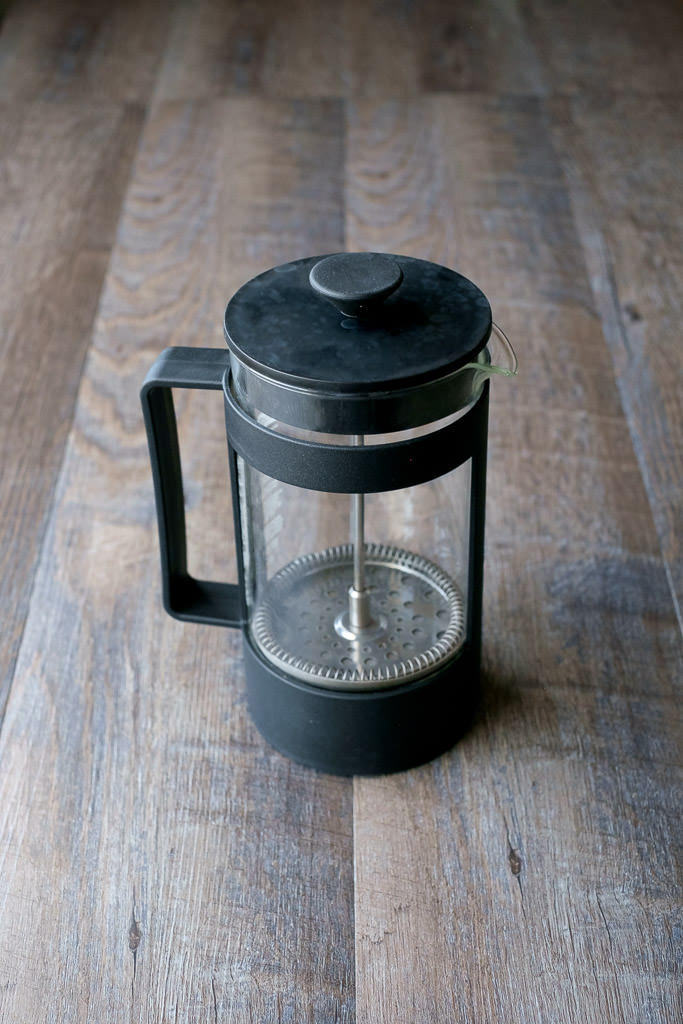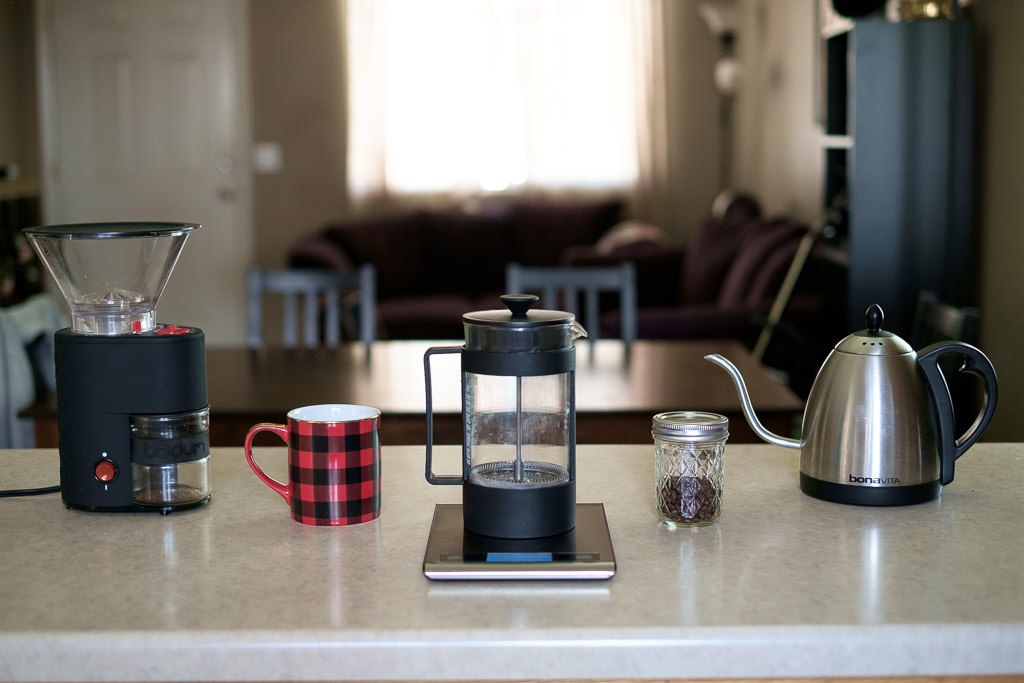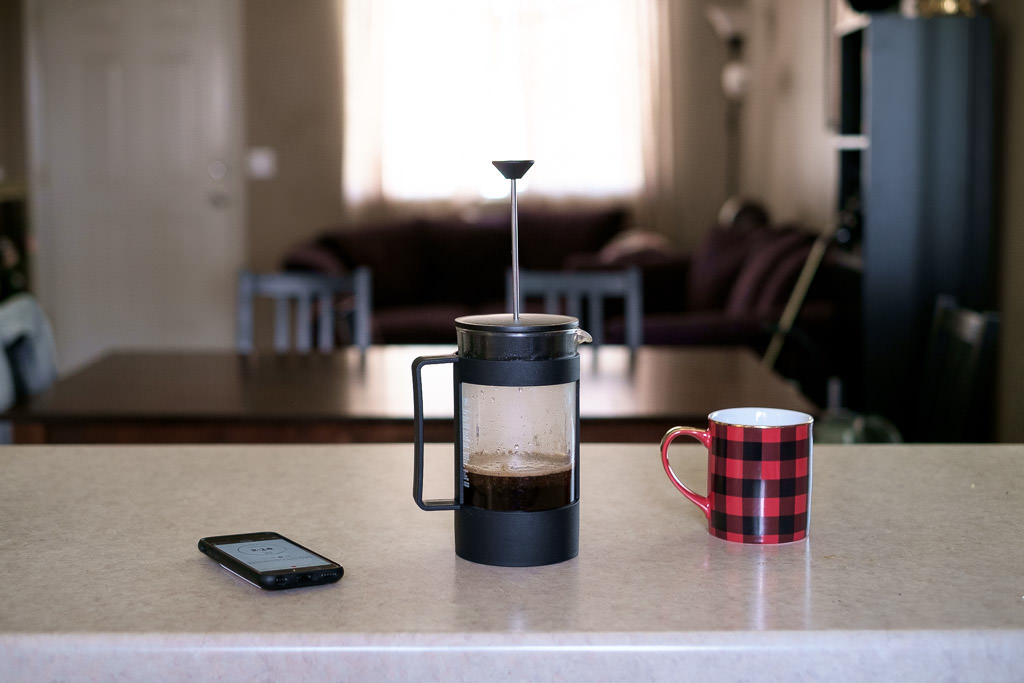French Press: Simple and Classic Coffee Maker
In my early coffee years, I associated the French press almost universally with good coffee. All the "coffee snobs" I knew referred to the device with almost holy grail like reverence. "Don't worry, I brought my french press," they would say in hushed voices and only to those who would appreciate it. Obviously, I'm exaggerating a bit, but nevertheless, when I had a french press of my own I felt proud to be a part of the coffee elite. I went on to use that French press as my primary coffee making method for a couple of years.
Maybe Not so French
Interestingly, an Italian, not a French, by the name of Attilio Calimani first patented the coffee press in 1929. The design underwent several modifications until 1958, when Faliero Bondanini patented his version. Bondanini manufactured his product in France but looked to Danish kitchenware company, Bodum, for distribution across Europe. Thanks to Bodum, the British company Household Articles Ltd., and an appearance in the 1965 film The Ipcress File, the French press's popularity exploded across Europe. The name varies from country to country. The French call it a cafetière à piston, while the English and the Dutch call it a cafetière. The term "French press," the name commonly used in the US and Canada, does not have a clear genesis. Some have suggested the French developed the method and Calimani only thought to patent it first.
Simple Design
Regardless of the origins, we do know the first iterations operated in a similar fashion to the modern versions. The user would add coarse grounds to a pot of boiling water and then press a wire mesh or cheesecloth fitted to a rod into the pot to separate the two. The modern French press utilizes the same extraction method and maintains a pretty standard design. A fine stainless steel or wire mesh filter affixed to a lid sits on top of a cylindrical beaker, typically made of glass or plastic. While modern designs vary from more utilitarian to more decorative, the use remains the same. Coarse coffee grounds steep in boiling water until the user separates them with the press and serves.
Ground for French Press
The coarse grounds provide a couple of necessary benefits to this method. It reduces the amount of surface area that is ultimately in contact with the water. In a full immersion method, like the French press, the grounds and water are in constant contact and that reduction helps prevent over-extraction. The grind size also allows for larger openings in the filter screen which promotes flow and separates the grounds while still allowing key flavors from insoluble solids and oils into the coffee. Those insolubles help create the French press's characteristic full-bodied flavor profile.
Dealing with Sediments
Coffee served from a French press typically contains significantly more sediments than its modern counterparts. Many have made efforts to reduce the sediments, but they typically succeed at the cost of an inferior extraction. Personally, I think the sediments make up an important piece of the French press's unique characteristics. Embracing these characteristics requires a couple of tricks for those of us who prefer cleaner cups, like myself. First, I refrain from mixing the coffee, which allows the sediments to settle to the bottom of the cup. Secondly, I don't drink the last little bit and choose, instead, to stop when I begin to taste the grit from the sediments. For a naturally cleaner, well extracted cup, check out the Aeropress.
The French Press Recipe
Now that we've had a chance to talk about this brew methods unique character and we're on board to embrace it, let's get down to making it!
Here's what you'll need:
- French Press
- Scale
- Kettle
- Stir device (I use the paddle from my Aeropress)
- Timer
- Grinder
Here's what you do:
Proportions
To fill an 8-cup* French Press at my preferred 1:16 coffee to water ratio: Coffee: 55gWater: 787g *1 cup is roughly 4oz
For a single 12oz cup: Coffee: 24gWater: 384g
Brew time: 4 minutes Water Temperature: 200-205 F
1. Pre-heat and Inspect
- Heat your water to 200 to 205 degree Fahrenheit
- Pre-heat French Press and decanter/mugs
- Dump out pre-heating water before brewing
- Inspect the plunger screen pieces for coffee solids and oil residue
- Typically the screen unscrews from the plunger and the pieces come apart
2. Begin Brewing
- Weigh out your coffee and grind on a coarse setting
- Add ground coffee to French press
- Start the timer as you begin to pour the water
- Pour slowly to monitor the water weight accurately and try to saturate all the grounds
- At 1 minute stir the brew a couple times to agitate and saturate the grounds
- I use the stir paddle from my Aeropress, a wooden spoon would also work fine
- Place the filter lid on top without plunging
3. Plunge and Serve
- After 4 minutes, plunge slowly
- Be careful, plunging too quickly or forcefully can cause a mess/some pain in the form of a coffee eruption
- Once the plunger filter pushed the grounds to the bottom, serve immediately
- If you're not going to serve it all at once, move the remaining coffee to a warmed decanting vessel.
- If left in the French press with the grounds, the coffee will continue to extract and will result in a densely bitter brew if left for too long.
4. Clean the French press
- Scoop out the remaining grounds
- Rinse the French press, lid, plunger, and filter screen
The Result
You'll find the resulting coffee typically possesses a dense, full-bodied flavor with a milder acidity and lingering mouthfeel. From my experience, this method is particularly well suited for medium-dark roasted coffees from the South American and Asia/Pacific regions and blends.
Do you have a French recipe of your own, drop in the comments below, I'd love to give it a try! If you have a suggestion for a future post, I'd love to hear from you either in the comments or through the contact form! As always, feel free to leave any comments or questions below.
Thanks for reading,
Stay handsome




